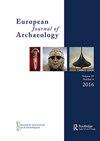有机生长的考古数据库及其 "混乱":挪威的业余金属探测
IF 1.2
2区 历史学
0 ARCHAEOLOGY
引用次数: 0
摘要
挪威的业余金属探测活动自2014年以来不断发展。在挪威的记录系统中,所有发现物都由五个地区博物馆的专业人员进行编目。通过对由此建立的数据集进行研究,作者得以审视地区和国家模式,并讨论看似定量的材料所固有的混乱和 "人 "的本质。他们的研究表明,考古学家和探测者都会影响证据的质量和数据的代表性。他们认为,金属探测模式主要是现代活动的结果,如管理实践和某些地区少数高产探测者的努力。如果我们要充分利用探测到的金属材料,了解这些偏差并系统地记录相关人员的活动至关重要。本文章由计算机程序翻译,如有差异,请以英文原文为准。
Organically Grown Archaeological Databases and their ‘Messiness’: Hobby Metal Detecting in Norway
Hobby metal detecting in Norway has grown since 2014. In the Norwegian recording system, all finds are catalogued by professionals at five regional museums. The examination of the dataset thus created allows the authors to look at regional and national patterns and discuss the inherently messy and ‘human’ nature of a seemingly quantitative material. Their study suggests that both archaeologists and detectorists influence the quality of the evidence and how representative the data are. They argue that metal detecting patterns are primarily the result of modern activities, such as management practices and the endeavours of a few very prolific detectorists in certain areas. Understanding these biases and systematically recording the activities of the actors involved is crucial if we are to make full use of the metal-detected material.
求助全文
通过发布文献求助,成功后即可免费获取论文全文。
去求助
来源期刊

European Journal of Archaeology
ARCHAEOLOGY-
CiteScore
3.40
自引率
6.70%
发文量
58
期刊介绍:
The publication organ of the European Association of Archaeologists, the European Journal of Archaeology seeks to promote open debate amongst archaeologists committed to a new idea of Europe in which there is more communication across national frontiers and more interest in interpretation. The journal accepts not only new empirical data and new interpretations of the past but also encourages debate about the role archaeology plays in society, how it should be organized in a changing Europe, and the ethics of archaeological practice. All periods are covered; papers, review articles, interviews and short "debate" pieces are all sought. Whilst English is the primary language of publication in the EJA, papers submitted in French or German will be given equal consideration.
 求助内容:
求助内容: 应助结果提醒方式:
应助结果提醒方式:


